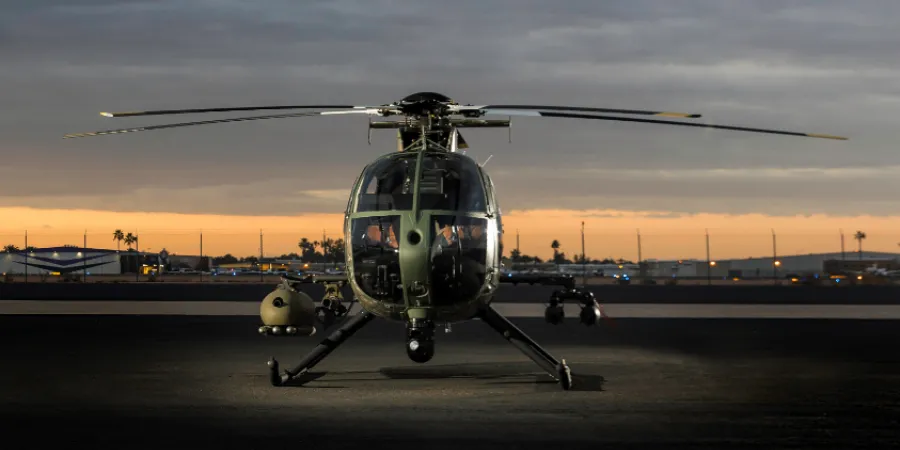Elbit to Upgrade MD 530G Helicopters with Integrated Weapons System
The MD 530G Block II scout attack helicopter will be equipped with a helmet display and tracking system, weapons management system, and mission management system
IsraelDefense
| 08/12/2019
Elbit Systems and MD Helicopters have signed a teaming agreement to incorporate advanced weapons and mission management capabilities into the MD 530G Block II (BII) scout attack helicopter.
The pilot-centric integrated weapons system (IWS) is comprised of a helmet display and tracking system (HDTS), a weapons management system (WMS), and a mission management system (MMS).
“Design and disruption are the cornerstone of all product development efforts,” said MD Helicopters CEO Lynn Tilton. “This partnership with Elbit Systems will allow us to rapidly expand the capabilities of the MD 530G, resulting in a next-generation, advanced light scout attack helicopter solution that will set a new standard in this highly competitive class.”
According to MD Helicopters, the HDTS will work to help pilots to place the aircraft into attack position and engage targets in both daytime and nighttime operations, while the WMS is a digital system that will allow the helicopter to support Hellfire missiles, Advanced Precision Kill Weapon Systems (APKWS) and other munitions.
The MMS features a digital mapping capability that is managed via a touchscreen MFD, as well as integrating directly with the electro-optical/infrared (EO/IR) sensor to enable, detect, and store intelligence.
Detect and store intelligence ensures that once a target has been acquired, the crew can choose to attack with guided weapons from a distance, or unguided munitions using the ballistics continuously calculated impact point (CCIP) displayed over the HDTS.
The company anticipates live-fire tests of the MD 530G equipped with Elbit System’s IWS in 2020.
The MD 530G Block II scout attack helicopter will be equipped with a helmet display and tracking system, weapons management system, and mission management system
Elbit Systems and MD Helicopters have signed a teaming agreement to incorporate advanced weapons and mission management capabilities into the MD 530G Block II (BII) scout attack helicopter.
The pilot-centric integrated weapons system (IWS) is comprised of a helmet display and tracking system (HDTS), a weapons management system (WMS), and a mission management system (MMS).
“Design and disruption are the cornerstone of all product development efforts,” said MD Helicopters CEO Lynn Tilton. “This partnership with Elbit Systems will allow us to rapidly expand the capabilities of the MD 530G, resulting in a next-generation, advanced light scout attack helicopter solution that will set a new standard in this highly competitive class.”
According to MD Helicopters, the HDTS will work to help pilots to place the aircraft into attack position and engage targets in both daytime and nighttime operations, while the WMS is a digital system that will allow the helicopter to support Hellfire missiles, Advanced Precision Kill Weapon Systems (APKWS) and other munitions.
The MMS features a digital mapping capability that is managed via a touchscreen MFD, as well as integrating directly with the electro-optical/infrared (EO/IR) sensor to enable, detect, and store intelligence.
Detect and store intelligence ensures that once a target has been acquired, the crew can choose to attack with guided weapons from a distance, or unguided munitions using the ballistics continuously calculated impact point (CCIP) displayed over the HDTS.
The company anticipates live-fire tests of the MD 530G equipped with Elbit System’s IWS in 2020.



